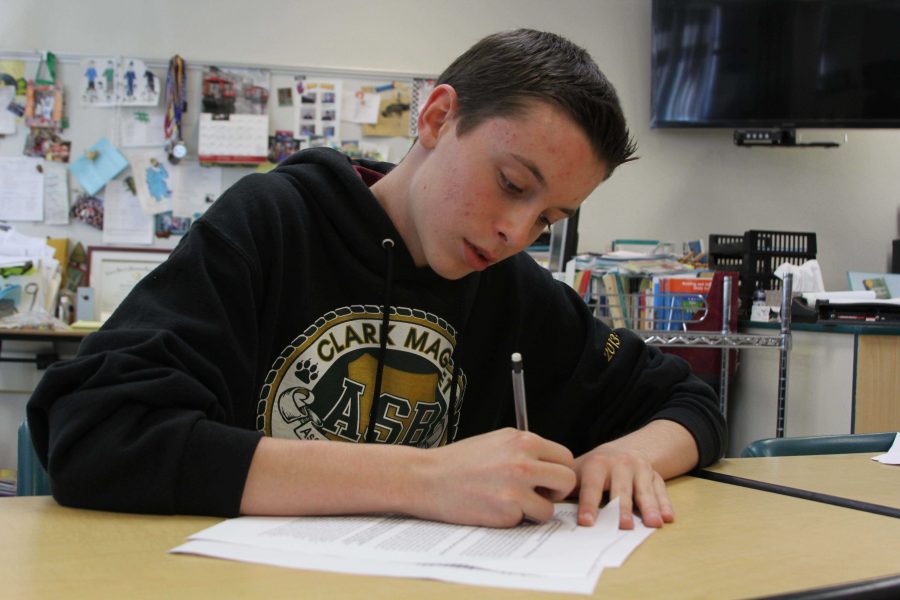Seniors tackle early action plans
Candidates for the Class of 2019 prepare their applications earlier in hopes of a higher likelihood of acceptance.
photo taken by Vanessa Codilla
Andrew Ansell edits his personal statements.
Nov. 1 is date circled on many hopeful college applicants’ calendars. While it marks the beginning for the application filing period for colleges in the University of California system, it also is the deadline for early action and early decision applications.
Unlike most seniors, those who go through early action and early decision turn in their college applications by Nov. 1. As a result, these applicants learn the school’s decision in mid-December, as opposed to April 1 for regular applicants.
“I’m doing early action for the peace of mind,” said senior Susan Krkasharian. “I want to find out if I got in before March.” Krkasharian said she plans to send her application to Stanford.
Krkasharian chose to do early action because it is not binding, unlike early decision, in which a student is required to withdraw his or her applications to other schools and enroll in the school they are accepted to through early decision. Krkasharian’s only fear is that she might get “deferred,” meaning that the college does not say whether she is accepted or rejected and postpones her admission decision.
Maya Ramamurthy, on the other hand, plans to apply to Princeton on early action. Aside from wanting to apply as soon as possible to her dream school, Ramamurthy believes that sending in her application earlier will give her an advantage and increase her chances of being accepted.
Although she is still in the process of completing the requirements, she has gotten letters of recommendations from three teachers, all of whom she asked for early in the school year to allot her teachers sufficient time to complete their work. “I started my personal statements in the summer, which mitigated some stress,” Ramamurthy said. “The problem is that people can be intimidated by the process, but you just have to sit down and start it to see that it’s not that bad.”

Susan Krkasharian logs onto her Common App account.
English teacher Stephanie Sajjadieh was asked to write nine letters of recommendation for just those going through early action. Although writing the letters takes as much as 20 hours away from her grading time, it is sacrifice she is willing to make, Sajjadieh said. For early applicants’ letters of recommendation, the largest constraint Sajjadieh has is time. The writing process takes her at least 1 or 2 hours because she personalizes it with anecdotes and makes sure she “has a lot to say.”
According to Sajjadieh, the only negative aspect of early action is that the student does not know how much financial aid they will receive. “It’s a common belief that if you don’t apply for financial aid during early action process you have a better chance of being accepted,” said Ericka Shin, who is applying to Stanford through early action.
For Shin and Elizabeth Abramyan, also applying to Stanford, the largest obstacle they tackled was writing personal statements. Shin and Abramyan spent many enrichment periods with their AP Language teacher, Conrad Pruitt. Pruitt helped by pitching ideas, editing their work, and continually reminding them to make their statements meaningful.
For those who plan to go through the early action or decision, Abramyan said, “Definitely start your applications in the summer. Even though I started in the beginning of August, I’m still working on it because I want to perfect the way I show myself in my personal statements.”
After the seniors turn in their early applications, they will continue to work on UC personal statements and applications for other private colleges.








